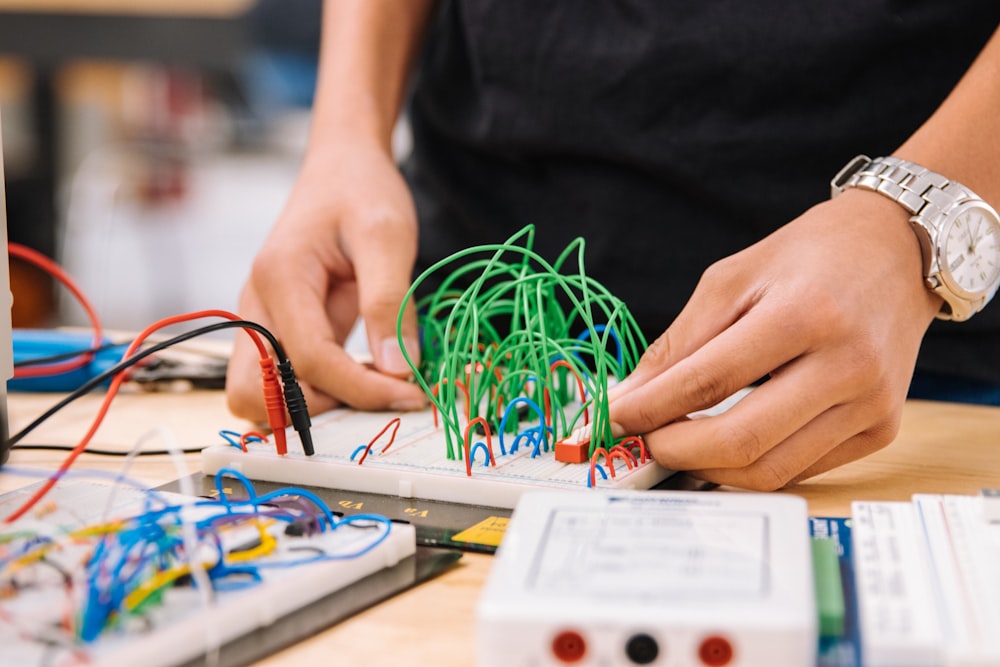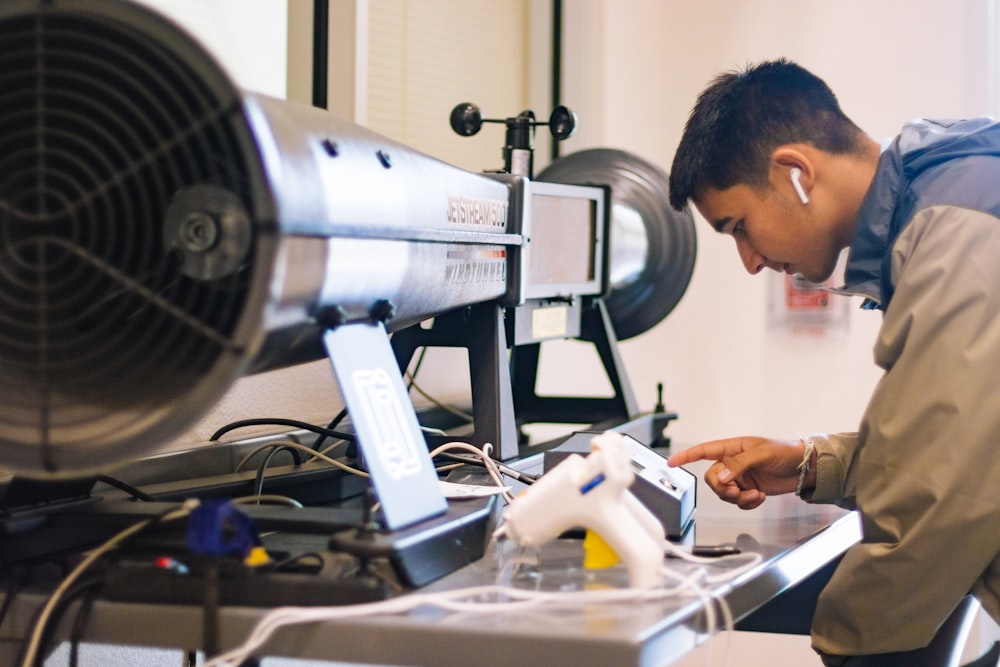29 Hands-On Learning: The Shift Towards Project-Based Methods in STEM Education
Educational models are shifting away from rote memorization and standardized testing towards innovative approaches that prioritize active engagement and problem-solving. Within the crucial fields of STEM, this shift is particularly evident through the rise of project-based learning methodologies.
Project-based learning transforms the classroom experience. Instead of solely absorbing information through lectures, students embark on collaborative endeavors that tackle real-world issues. This approach moves beyond theoretical knowledge, fostering critical thinking, problem-solving skills, and a deeper understanding of how STEM concepts translate into practical applications. Even when faced with challenging assignments, an option to pay for essay can offer tailored support, allowing students to gain clarity and confidence alongside the hands-on learning experience. Let’s explore how project-based STEM education is redefining the learning process and preparing students for success in a rapidly evolving world.
https://unsplash.com/photos/person-holding-green-ball-on-white-paper–Cm7hnp4WOg
Why Project-Based Learning in STEM Matters
The world we live in demands a workforce equipped with more than just memorized facts and formulas. Employers seek individuals who can innovate, collaborate, adapt to rapid change, and think outside the box. Project-based learning (PBL) in STEM is designed to cultivate these essential skills within the next generation of scientists, engineers, and innovators.
Unlike traditional classrooms, where the teacher directs most learning, PBL puts students in the driver’s seat. They delve into open-ended questions, conduct research, form hypotheses, design solutions, and ultimately present their findings. This student-centered approach nurtures a sense of ownership over the learning process, making it more impactful and ultimately prepares them for success beyond the classroom.
Real-World Relevance
One of the key strengths of PBL is its emphasis on solving real-world problems. This means students can bridge the gap between the classroom and the world around them, making textbook concepts tangible. Consider these possibilities:
- Designing earthquake-resistant structures to protect communities in seismically active zones;
- Developing a water filtration system for areas with limited clean water access, focusing on affordability and sustainable approaches;
- Creating bioplastics to decrease pollution while analyzing their potential impact on ecosystems;
- Programming apps to simplify essential tasks with inclusivity for a diverse user base in mind;
- Analyzing real-world datasets to understand climate change patterns and design mitigation strategies.
By tackling authentic challenges, students grasp the interconnectedness of STEM concepts and see the potential they hold to address global issues and create a better future.
Collaboration and Communication
STEM fields are rarely the realm of lone geniuses. The most significant advancements often happen when experts from diverse backgrounds come together, pooling their skills and perspectives. PBL mirrors this real-world dynamic by encouraging students to work in teams, fostering collaboration right from the initial brainstorming phase. It allows them to debate, discuss alternative approaches, and respectfully exchange ideas.
As students tackle projects together, they strengthen their communication skills, both written and verbal. Presenting findings, navigating team dynamics, and effectively articulating complex concepts to different audiences are all key components of PBL. These are precisely the skills sought after by employers, making students with PBL experience particularly well-suited for their future careers in STEM.
Developing a Growth Mindset
STEM subjects can be challenging, and PBL embraces that challenge as part of the process. When students encounter setbacks, unexpected results, or need to redesign their initial ideas, it becomes an opportunity for iteration and improvement. In a traditional setting, these moments may feel daunting, but with PBL, they become an essential part of the discovery process.
Through tackling project challenges, students learn resilience, embrace mistakes as learning opportunities, and develop a growth mindset. They appreciate that STEM isn’t just about getting the ‘right answer’ on the first try but about asking intelligent questions, adapting along the way, and celebrating the journey of discovery, both individual and collective.
Cultivating Critical Thinking
Projects that address authentic challenges go beyond simple textbook solutions. As students grapple with complexities, they exercise critical thinking skills such as:
- Analyzing information from diverse sources;
- Synthesizing and evaluating data;
- Drawing evidence-based conclusions;
- Justifying design choices and decisions;
- Considering potential impacts or ethical implications.
These skills aren’t limited to STEM. They prepare students to be analytical thinkers and problem solvers in a vast array of fields.
Technology Integration
Today’s world, and more importantly, its future, revolves around technology. The review of EssayHub highlights how project-based STEM learning naturally embeds a range of cutting-edge tools. Coding, simulation software, 3D printing, data analysis suites, and robotics equipment are just a few examples that give students real-world tech exposure.
This integration helps prepare them for the tech-driven workforce they’ll enter. Furthermore, technology opens up avenues for deeper research, advanced modeling, and enhanced project outcomes, driving student engagement and deepening their STEM skills.
https://unsplash.com/photos/man-in-white-crew-neck-t-shirt-holding-white-smartphone-q2BpMaqzDNQ
Beyond the Classroom
Project-based learning ignites a spark that extends beyond the school walls. Students discover a passion for innovation, building the curiosity that fosters self-directed learning. PBL also naturally invites interdisciplinary connections. When solving real-world issues, STEM concepts integrate with fields like the arts, history, and social studies.
PBL’s benefits reach into students’ communities. Projects with a civic focus create opportunities to understand societal needs and design potential solutions. Schools embracing PBL forge partnerships with businesses and organizations, giving students access to authentic audiences, mentors, and inspiring STEM role models.
Final Thoughts
The shift towards project-based learning in STEM fields marks a transformation in how we prepare students for a rapidly changing world. This hands-on approach transcends merely absorbing facts and fosters critical thinking, adaptability, and collaborative spirit. PBL can inspire confidence, making even challenging papers seem less daunting—especially knowing that the best Python assignment help websites exist—as students understand the real-world applications of their knowledge. Project-based learning in STEM isn’t just about changing how we teach science or math; it’s about fostering a generation of innovative problem-solvers who are eager to learn, not just for the next test but for the advancement of our world.
Author Bio
Writer Nicole Hardy, a distinguished journalist in the realms of education and the arts, is celebrated for her thorough and discerning coverage of performing arts education. Her career, which extends beyond ten years, has solidified her status as an authoritative figure in this domain. Hardy is praised for her thorough analyses and captivating writing manner. She earned her Master’s in Journalism from the University of Arts, with a focus on arts, culture journalism and now she provides amazing student friendly content on News.EssayHub


